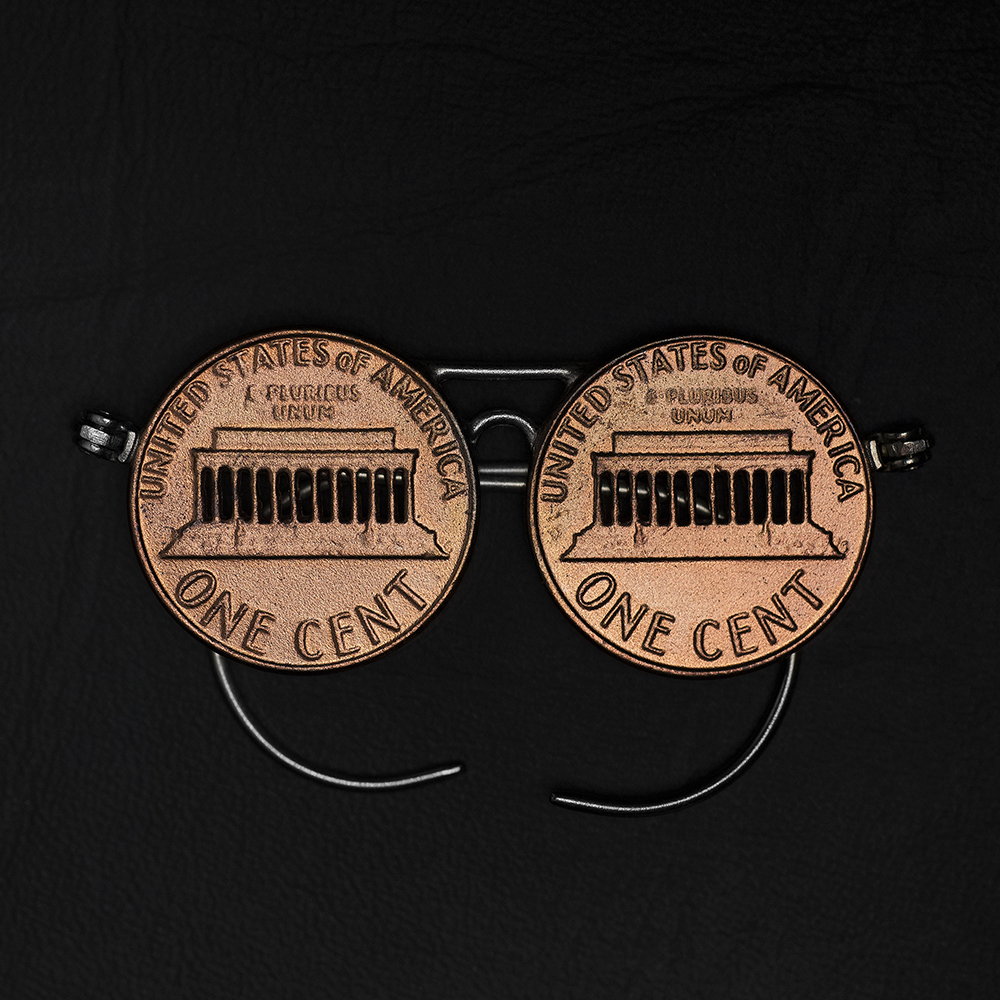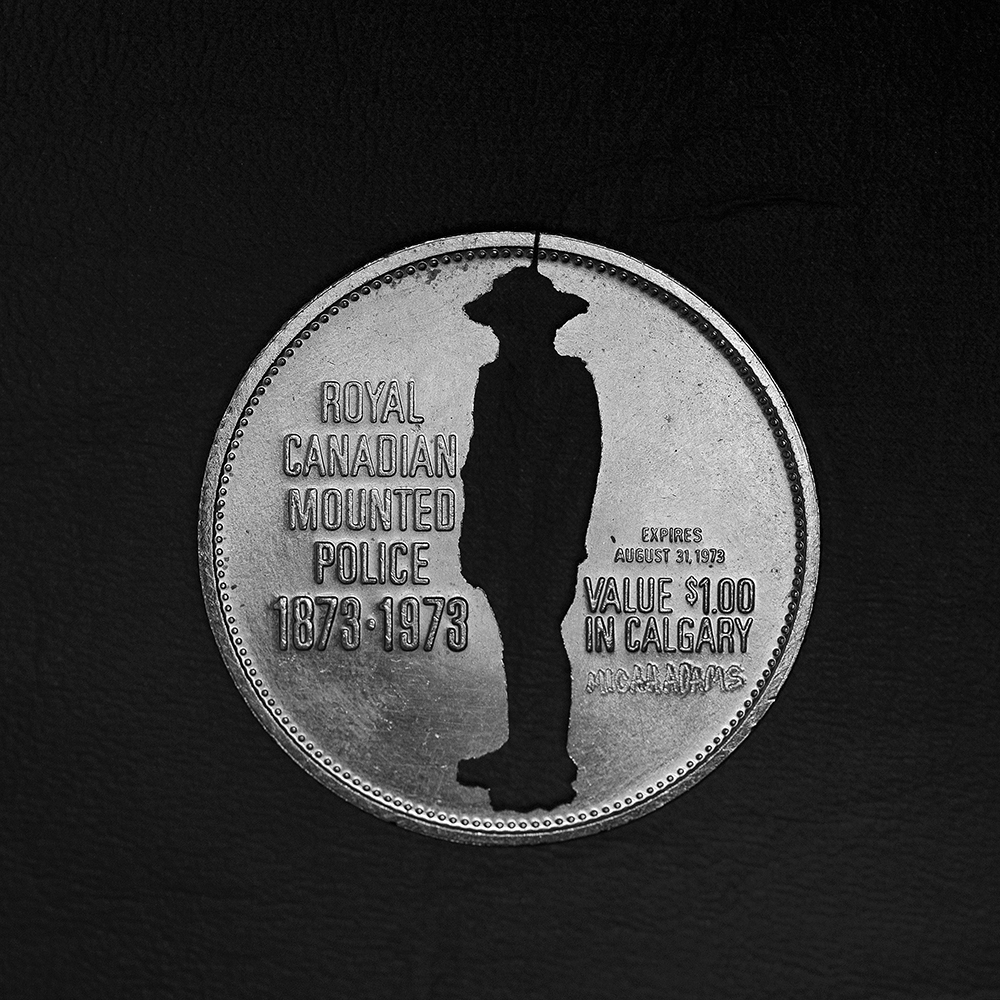ARTIST OF THE MONTH - ADAMS
ARTIST OF THE MONTH
Every month we introduce you to one of the Canadian artists we represent. There is no salt and pepper, we reveal the rawest story on our artists' creative journey. How they met and fell in love with jewellery? What inspired them and how? What was the making process like? What are the tips on being a successfully established jewellery artist? Visit our Facebook and Instagram pages to stay up to date on our latest collections. Go to INTERVIEW ARCHIVE to read more stories.
PRECIOUS - Featured Artist : Micah AdamsApril 02, 2019 PRECIOUS is an exhibition that asks us to look at the ways in which we covet and desire some things and discard others; the luxurious materials we revere versus those we so easily dispose of. Micah Adams is arguably equal parts artist, collector and mad scientist - creating art that is inspired by the materials themselves, pushing the boundaries of what is possible, if only to see if it can be done.
Q: What is your origin story - what do you think sparked your creativity? I’m not sure what motivated or specifically sparked it, but when I was young, I enjoyed drawing and making maps and building things with Lego. I didn’t necessarily associate it with art or creativity, that came later. I liked to personalize things, when I built a new Lego set, I always wanted to change things, make it my own somehow. When I was older I liked making line drawings, they were elaborate doodles of patterns and systems; I wasn’t much interested in representation or figurative drawing. More or less, serendipitously, I ended up trying out art courses in college, which I liked. I especially liked the processes involved in printmaking. I liked that an image could be created from multiple sources, maybe with hand drawn lines or brushwork, stencils or photocopies, at each step in the process the image could be reworked and blended. In the end, the image could be still quite seamless and cohesive. Q: How did your journey as an artist and a jeweller begin? Once I had committed to continuing art at university, I was making detailed drawings and things (sculptures) smaller and smaller, which led me to the jewellery studio. There was also a hobby store near the university and I would often go there and find little things, not always miniatures but small things that I liked to incorporate or expand upon in the jewellery studio. I wouldn’t have liked the results in other mediums. I found little nuts and bolts that were scaled down versions of regular bolts, their proportions were the same. This was a design cue for me. Once photographed they could look any size. I tried to make a project around these nuts and bolts. The first was a kinder surprise capsule attached to some model railroad parts. That lead to a series based around some aesthetic rules borrowed from industrial boilers and copper pipes, they were bolted together into tiny handheld structures. I tried to make jewellery too, but felt more of a connection with just handheld small objects. The jewellery was more sculptural than wearable.
Q: Why do you think jewellery as a creative medium or means of expression, is an important or relevant one? How does jewellery, in your opinion, differ from other creative forms of expression? Jewellery is a unique medium in that it relates to the body, to skin, it can be so personal and that connection is important and lasting. An object worn for a lifetime is going to have great significance to loved ones as an heirloom in the future. The power of that history is quite an interesting idea to play with when I sit down and think about jewellery and specifically in my studio about what should or could become a piece of jewellery. More and more the heritage of an object is becoming something I think about when making work. I think about an objects history and its potential heritage in the future. That said, I’m careful about what I make that becomes jewellery or not, sometimes I feel a greater kinship to objects I can hold in my hand vs the ones intended to be worn. That’s often my personal preference but sometimes when I start with a project, I know right away that it needs to be a piece of jewellery of some kind. Q: Explain your creative process - how does a piece of jewellery begin and end for you? My works often begin with an object or material, I take my design cues from that. The project begins when I have an idea or thought that relates to that object. Often I collect things not knowing what I will do with it, but if they are on my mind enough, I tend to develop an idea that could be combined with that object or material. But it sometimes happens the other way around. I’ll have an underdeveloped idea on my mind, then I come across something, the perfect object that completes the idea. At this point the project can begin, but before that point it’s just something on my mind a lot, like a problem that can’t be solved. In the meantime I stay busy in the studio working on other problems that have already been solved and need production time. My desk, bench area and shelves are littered with half-finished ideas, things unresolved. Things waiting. I like to keep them around and ever on the mind. Sometimes those ideas are just technical things, ways I would like to work a material in the future, a specific technique I may have developed and I just need a concept to justify the work.
Q: Where do you find inspiration as an artist? I find I develop ideas best while working on one project, I may figure things out on another. If things aren’t working out the way I like on a particular project, I switch and work on something else, I try to just put in the time of being in the studio even if I don’t necessarily have a project to work on or deadline. I might just be tinkering or experimenting and not feeling like I have accomplished a lot at the end of the day, but I think spending the time is beneficial in the long run, having time to think freely, I have a few ongoing projects that I go back to that I can work on with even short bits of studio time, those are projects that sort of help me unwind at the end of the day and that’s when my mind can wonder a bit and ideas for other projects start to generate. It helps having a home studio, I feel that I can work more intimately or have a different ease of working that won’t happen if I get bogged down in the logistics of working outside the home. Also things can stay on your mind longer, which is sometimes good and bad, but ultimately it allows for more down time in the studio, more reflective time. Q: What other artists inspire you? It’s encouraging to talk to, or rather listen to older artists, about their experiences. People with more experience tend to talk about things you might be currently going through with a different perspective and with a certain amount of grace that I admire. It doesn’t happen very often but I like meeting people who have forged their own path and made a career for themselves. It doesn’t really even have to be related to art.
Q: Looking back from your career now, to when you first began - how would you best describe your evolution so far? As for my career, from the beginning I tried not to have expectations about my future. As long as I was still able to afford the time to make the work I wanted, that was my goal. To say that my career’s evolution has been surprising would be an understatement. As I’m sure most would say for their own lives in general. I will say that I need a few more year to have some perspective on where I am now. In terms of the work I’ve done I would not say that my career has led me where I thought, that’s for sure. Would the 20 year old version of myself like the work I do now? Probably not. Q: What do you hope those who view your work or wear it, take away from that experience? When I first started doing art in school, I remember being so embarrassed when we had to show our work to the rest of the class. That part didn’t occur to me, the sharing with others your ideas part. It sounds ridiculous now, and I did get over it, but it still affects my approach today. I’m working in the studio to make things out of my own interests or curiosities. I think it's fine for the work to be something different for others. The life an artwork has once it's left the studio is its own thing and I wouldn’t want to impose my will on viewers. The artwork can have a life of its own. The work is tied to me as the maker, but what others bring to an artwork can be just as rich as what the artist brings. That said, I do enjoy interacting with people and my work in a face to face scenario and hearing their impressions and ideas, I don’t feel a huge gap between the way the work is produced and how it is received.
Q: Through this exhibition, PRECIOUS, we are asking the question, why do we value some things and so easily dispose of others - an important question when we consider the state of our environment. What role does the environment, consumption or consumerism play in the work you have created? The environment, consumption and consumerism is a part of our lives regardless of how you engage with it. I enjoy using familiar objects as materials in my work but not so much as a statement of personal politics. It’s more akin to Christian Marclay’s The Clock, which illustrates a real time 24 hour film loop using film history’s entire catalogue. There is nothing new under the sun, ideas and materials may all be recycled. Regardless the actual need to recycle or slow our consumption of natural resources. Most of my work starts with found objects, more and more I like using older objects or things with a certain history to them. Generally speaking, the things I’m drawn to are everyday objects, overlooked minutia, fragments of our day to day lives. More so figuratively than literally. I tend to also be drawn to manually intensive processes. As high tech methods are becoming more common and expected as a mode of production, I think I make work that directly opposes that. Part of that is about being self-reliant, but part of it is also a rejection of consumerism and mass produced goods, objects being made to be disposable. I’d like to maintain a close connection to the process of making by finding ways to do things myself.
|






